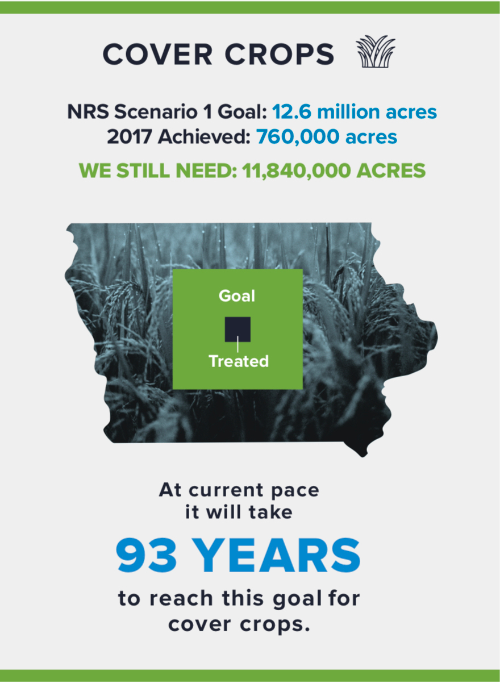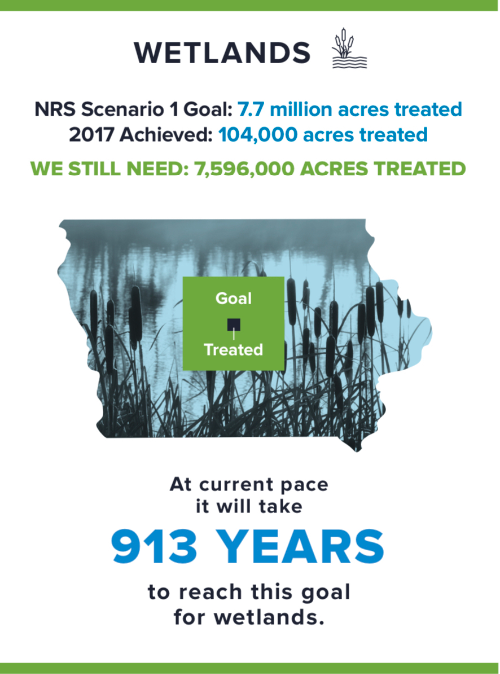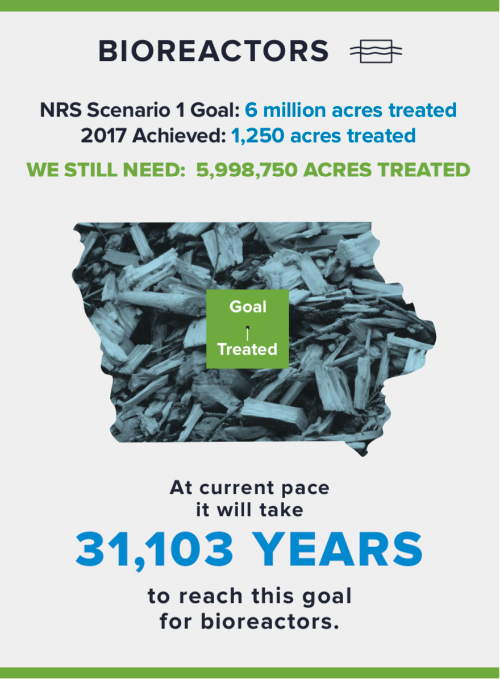Big ag groups like the Iowa Farm Bureau along with Iowa Republicans like to tout the state's Nutrient Reduction Strategy (NRS) as the path forward to reduce pollution of state streams and rivers from farm runoff.
A new Iowa Environmental Council (IEC) report issued Tuesday (July 16) paints the NRS as a very slow road to nowhere.
The report – "The Slow Reality of the Nutrient Reduction Strategy" – states the NRS's goal to reduce nitrate and phosphorus runoff by planting cover crops will take 93 years to achieve at the current pace and funding levels.
Adding wetlands needed to address the farm pollution will take 913 years to achieve the NRS goals, and adding needed bioreactors will take more than 31,000 years to NRS objectives.
In short, the voluntary state strategy isn't a viable solution to reduce nitrate and phosphorus pollution of state waterways by industrial ag operators, according to the IEC study.
"Despite the science-based practices outlined in the strategy and the insistence by the state that the NRS is working, Iowans have little to show in terms of significant water quality improvements," the report says.
"Even using implementation rates as measures of success, the NRS falls short," according to the IEC analysis. "Since 2013, less than 1 million acres have been treated by the three practices (cover crops, new wetlands and bio-reactors) outlined in scenario one – just 3 percent of the 26.3 million acres of cropland in Iowa."
"A recent study from the University of Iowa revealed that Iowa’s nitrogen load to the Gulf of Mexico has increased by nearly 50 percent since 2003," the IEC reported. "The adoption of the NRS in 2013 appears to have had no impact on that trend."
CLICK HERE to download and read the full Iowa Environmental Council's analysis of the state Nutrient Reduction Strategy.



Source: Iowa Environmental Council
